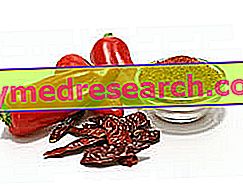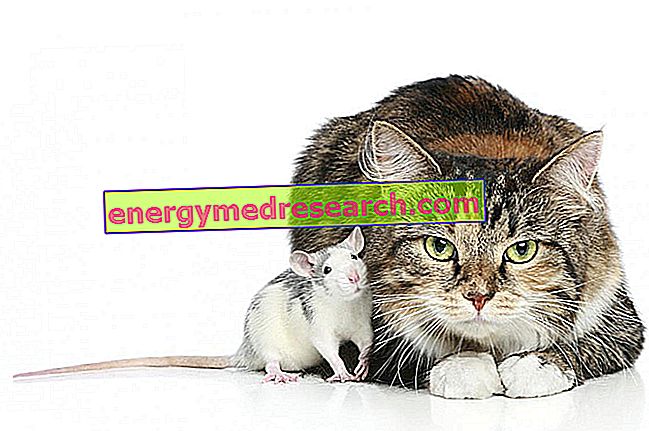What is Shea Butter
Shea butter is a mixture of fatty substances obtained from the seeds of Vitellaria paradoxa (or Butyrospermum parkii), a tree belonging to the Sapotaceae family. This high trunk woody plant - also known as the "tree of youth", in memory of the extraordinary regenerative properties - grows in the arid and endless landscapes of the sub-Saharan savannah.
The drug, from which the famous shea butter is made, consists of seeds (2-3 for each fruit).

Production
According to the traditional production method, the fruits of the shea plant must be harvested from mid-June to mid-September. The seeds will then be freed from the pulp that surrounds them and will undergo a series of processes in order to obtain the butter. These operations consist of:
- Preventive boiling, roasting or fumigation of the seeds (this operation is optional);
- Drying in the sun which must last about a month;
- Crushing of the seed, crushing and grinding, until a pasty mixture is obtained;
- The paste obtained in this way is added with water. The mixture is then brought to boiling and then filtered.
At the end of all these procedures an unrefined butter is obtained whose color can vary from white to yellow.
Currently, to speed up the production process, rather than manually, the butter is obtained by mechanical compression, or is extracted through the use of suitable solvents.
Composition
The composition of shea butter is influenced by several factors. In fact, it can vary depending on the conditions in which the plant grows, depending on the period in which the fruits are harvested and according to the extraction method used.
However, like many other similar vegetable products, shea butter is mainly composed of a rich mixture of fatty acids, such as:
- Oleic acid (39-68%);
- Stearic acid (22-50%);
- Linoleic acid (4-8%);
- Palmitic acid (3-12%);
- Arachic acid (0-3.5%);
- Alpha-linolenic acid (0-1.6%);
- Lauric acid (0-1.5%).
Other fatty acids included in the composition of shea butter are myristic acid, vaccenic acid, behenic acid, lignoceric acid and gadoleic acid.
Among the components of shea butter we also find liposoluble vitamins with antioxidant action, such as provitamin A and E, which give it much of the precious virtues ascribed to it.
Property

In detail, shea butter has:
- Moisturizing properties;
- Nutrient properties;
- Emollient properties;
- Regenerating properties;
- Antioxidant properties.
The regenerating and antioxidant properties of shea butter mean that this product is particularly appreciated also in the world of anti-age cosmetics.
uses
As mentioned, due to its composition and its particular and numerous properties, shea butter is used both in the food industry and in cosmetics.
Cosmetic uses
Shea butter is used, both locally and internationally, in the treatment of chapped skin, dry hair and more generally to tone and soften the epidermis. For this reason it is part of the composition of many cosmetic products, such as soaps, ointments and various creams (nourishing, softening, emollient, anti-wrinkle, anti-stretch marks, anti-inflammatory, skin anti-aging, calming, photoprotective and after-sun care).
Once spread on the skin, shea butter is quickly absorbed without leaving that unpleasant greasy sensation.
Used pure (from controlled and certified sources), shea butter can prove to be a precious ally in case of:
- Dryness of the skin;
- Skin redness;
- Burns and burns;
- Skin irritation;
- Dermatitis;
- rashes;
- Stretch marks (if applied during pregnancy, the shea butter seems to be able to prevent its appearance);
- Prevention of breast fissures caused by breastfeeding;
- Diaper, shaving and hair removal irritations.
At the same time, shea butter is able to protect the skin from solar radiation and is an excellent remedy to give skin relief after sun exposure. However, in this regard, it is important to remember that in no case shea butter should be used as a substitute for sunscreens.
In the tricological field it is used in the preparation of balms, to restore vitality to dry, frizzy and brittle hair. In this case, the product should be left on wet hair for a few minutes before rinsing it off with a generous wash.
At the same time, pure shea butter can be used on the hair as a real mask to hold for about 30 minutes. After this time you can proceed with the normal washing of the hair that will appear softer and more hydrated.
Shea butter online

Shea butter Shea butter is available, unrefined, pure and 100% natural.
To take full advantage of its emollient, nourishing and elasticizing properties, the product, extracted from the seed of the homonymous plant, can be used as an anti-aging mask, to relieve itching and burns, as a lip balm and as a body moisturizer. In the latter case, it may be useful to combine it with a carrier oil, in order to make it more fluid and better spreadable.
The expiration date on the jar is 12 months from opening, an advantage considered the 500g format of the product.

Alternatively, you can opt for an unrefined and 100% pure shea butter from Ghana, certified organic by the Soil Association.
The raw material is purchased by a women's cooperative founded by Georgina Koomson, based in Wa, northern Ghana. This group, composed of over 600 women, supports the local community (which has over 2400 people) through the production of organic Shea butter.
The butter has a characteristic and natural aroma and retains all the properties of Shea. Contains high levels of unsaturated fatty acids and natural antioxidants. Shea is considered useful to hydrate the skin and to create a natural barrier against external aggression.
The product is not tested on animals and is vegan.
See also: shea butter in cosmetics
Food uses
In the alimentary field, shea butter can be used like a common table oil, or added to cocoa butter to produce chocolate. Again, if mixed with other vegetable butters, shea butter can be used as a substitute for cocoa butter. In effect, working the almond hot, obtained by boiling, drying and crushing of the seed, a paste is obtained with a bitter aroma and a color similar to that of cocoa butter.
Shea butter, obtained by subsequent processing of the pasta, has a characteristic composition and is distinguished by the high percentage of unsaponifiable substances (which varies from 5 to 15% depending on the origin). To make a comparison, in olive oil this percentage is around two and a half percent, while in that of avocado between two and six percentage points.
Sponsored content: My-personaltrainer.it presents products and services that can be purchased online on Amazon and / or on other e-commerce sites. Whenever a purchase is made through one of the links on the page, My-personaltrainer.it could receive a commission from Amazon or other cited e-commerce. We inform you that the prices and availability of the products are not updated in real time and may change over time, so we invite you to check availability and price on Amazon and / or on other cited e-commerce.



